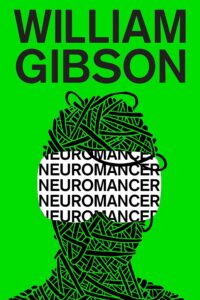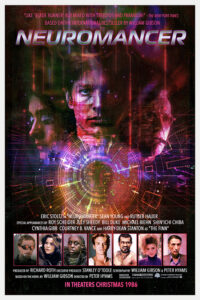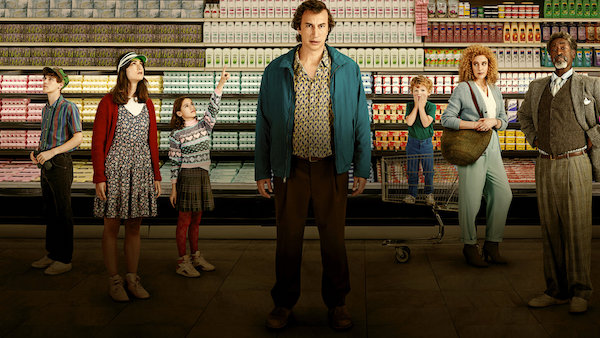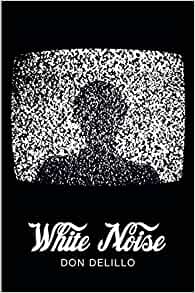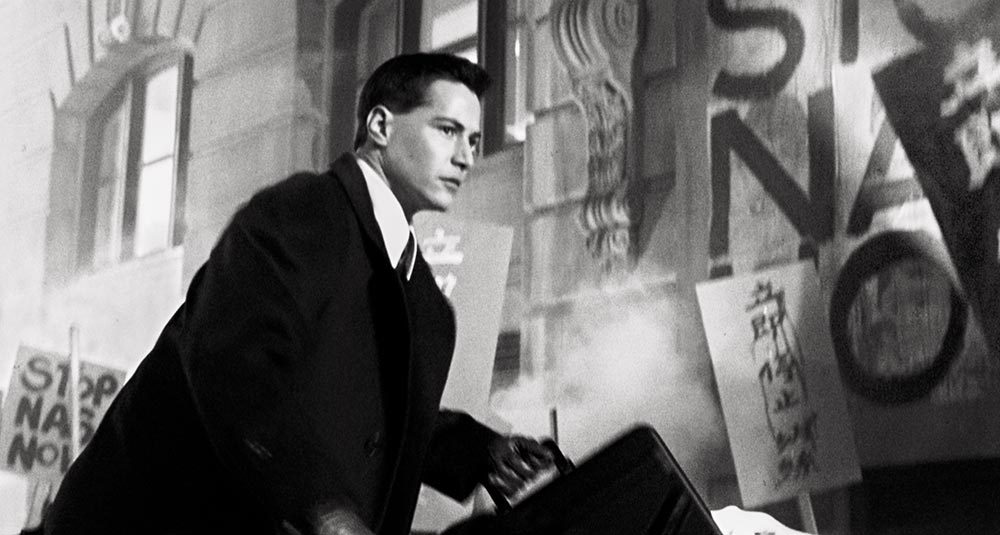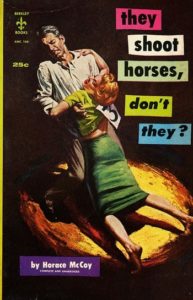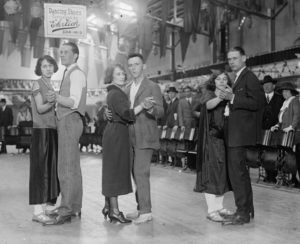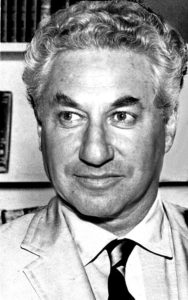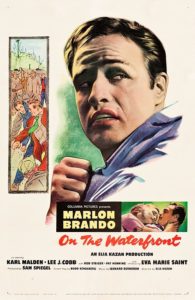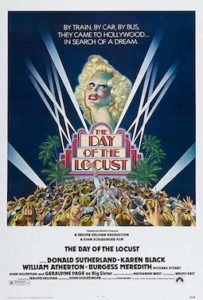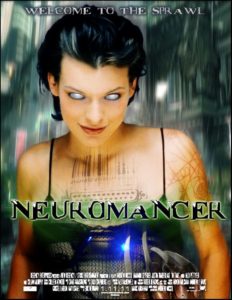
Previously: A unique manifesto
In this series where I review my last ten years of blogging, I tend to focus on posts that either made some waves, or posts with subjects I want to take up again. The 2022 post I want to return to has both qualities. It regards William Gibson’s cyberpunk classic Neuromancer.
Back then, I wrote about the Waiting for Godot-like patience the book’s fans have endured in anticipation of a movie adaptation. Rumors and announcements have come and gone over the last four decades: Directors taking on the project, studios arranging funding, big-name actors being tapped, and so on. Joshua Hull, author of Underexposed!: The 50 Greatest Movies Never Made calls the elusive Neuromancer movie “the white whale for a number of filmmakers throughout the years.”
It was yet another rumor in 2022 of an Apple TV+ adaptation that led to me to ask “Will we finally see Neuromancer on the screen?” As usual, nothing came of it.
At this rate, we may reach the year Neuromancer is set—some time in the 2030s—before a movie version is produced.
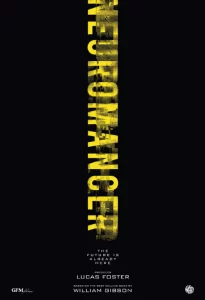
Whatever else William Gibson will be remembered for, his fiction has almost always centered on the proles and lumpen claiming technology and repurposing it for their own ends. Gibson put the punk into cyberpunk. As I wrote in my 2023 follow-up,
[Gibson] took computers out of the realm of men in lab coats standing over coffin-sized boxes in dust-free rooms. He put tech on the street, in the pockets of skate punks and the ears of all-night sushi line cooks. … Instead of an obscure nerd subculture, he gave exotic tech to everyone, even folks sleeping on mattresses on rain-soaked streets. Neuromancer is a book set during a perpetual war between the haves and have-nots, and the battlefield is cyberspace.
So it’s delicious how this has folded back on itself. Today’s video and photo technology has been claimed and repurposed to craft hints of a film version of Neuromancer. As exhibited here and in the 2022/2023 posts, the proliferation of fan-made Neuromancer film posters is evidence of what can be done with some Photoshop skills and a DeviantArt account. Likewise, as the fake movie trailer below proves, it’s now possible to assemble, score, and distribute worldwide a cinematic amuse-gueule of what a movie might look like.
This leads to a tantalizing question: What if someone simply made their own version of Neuromancer? Not a movie trailer, but the movie itself?
When Neuromancer was published forty years ago, the suggestion would have been ludicrous. The indie film scene was only starting to find its feet. Movies like David Lynch’s Eraserhead (1977) and the Coen Brothers’ Blood Simple (1984) were some of the earliest to gain traction outside of college-town theaters. Robert Townsend’s Hollywood Shuffle (1987) was the first film I knew of to be financed on credit cards.
As in Gibson’s Sprawl, today’s film-making technology is fast, cheap, and out of control. A new breed of auteurs exist, capable of filming and editing movies with consumer electronics—even filming with iPhones. Distribution is as easy as clicking on an “Upload” button.
Unlike the high production costs associated with most science-fiction movies, Neuromancer could conceivably need far less in terms of costumes, set design, and special effects. Most of the book takes place in locales like neon-saturated Chiba and modern luxury hotels, locations that could be reproduced in many cities in North America. The “future tech” of Gibson’s Sprawl is off-the-shelf these days. Data gloves? Check. Virtual reality headset? Check. That leaves the bulk of the special effects to his vision of cyberspace, which an experienced computer animator could flesh out.
Perhaps I’m lowballing the effort required. Even if the production design is within reach, the make-or-break line will be in the acting. The power of Neuromancer is the characters and the human drama, and not a lot of splashy CGI. Get good actors, and be ruthless in cost-cutting the rest of the production.
Given all this, perhaps the question to ask is: Why hasn’t an amateur fan production been mounted?
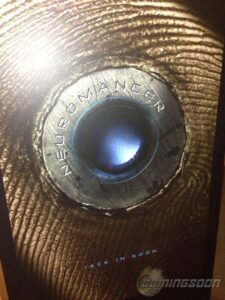
The obvious hang-up will be copyright law. But the dreaded DMCA take-down notice shouldn’t be feared too quickly. Others have worked around this in clever ways. Three high school friends recreated Raiders of the Lost Ark, shot-for-shot, in the 1980s, and released it wide with the blessings of George Lucas and Steven Spielberg. Charles Ross performs a “One Man Star Wars Trilogy,” stage show, doing all the voice lines and sound effects, again, with the permission of Lucasfilm. Innumerable Star Trek fan films, from shoddy to surprisingly worthy, abound.
In the 2000s, an acquaintance of mine in the theater business gave me his take on Charles Ross’ “One Man Star Wars” shows. He said Ross started performing the act in his living room for friends and family, and then at local theaters for low pay, until he was filling city auditoriums. He didn’t approach Lucasfilm until he had some success under his belt. He plead that his show was an act of love for the source material, and Lucas relented.
In other words: Start low to the ground, work your way up, and ask forgiveness after-the-fact rather than begging permission to proceed.
A fan-made Neuromancer film could gingerly tiptoe across the finish line with a similar strategy—and maybe even get away with it. If the movie were a labor of love, and not an easy-money cash grab, who knows? I have to believe the game of red-light/green-light Gibson has played with Hollywood over the decades has soured him on the studios, not to mention his rejected script for an Aliens sequel and all the trouble the studios made for Johnny Mnemonic.
Stephen King had a “Dollar Deal” program where he permitted filmmakers to adapt any of his short stories for one dollar, providing they (a) sent him a copy of the final product, and (b) they did not exhibit it commercially without his permission. (To get an idea of its success, The Shawshank Redemption began as a Dollar Deal.) Lucas made similar agreements with the Raiders kids and Charles Ross.

Earlier I wondered if I was low-balling the production effort. I may be low-balling the copyright issue twice as much. Thanks to a lawsuit by CBS/Paramount against the fan production of Star Trek: Axanar, the heyday of Star Trek fan films appears behind us. Stephen King concluded his “Dollar Deal” program at the end of 2023, with no stated reason. My guess is that the proliferation of studio streaming services—the “plusses” like MGM+, Disney+, and Paramount Plus—has unlocked a new revenue stream for old intellectual property, and the copyright lawyers are battening down the hatches.
Still, there is no extant movie or TV version of Neuromancer to compete against. Who knows? An under-the-radar fan production might stand a chance, if done with care and passion for the source material.
